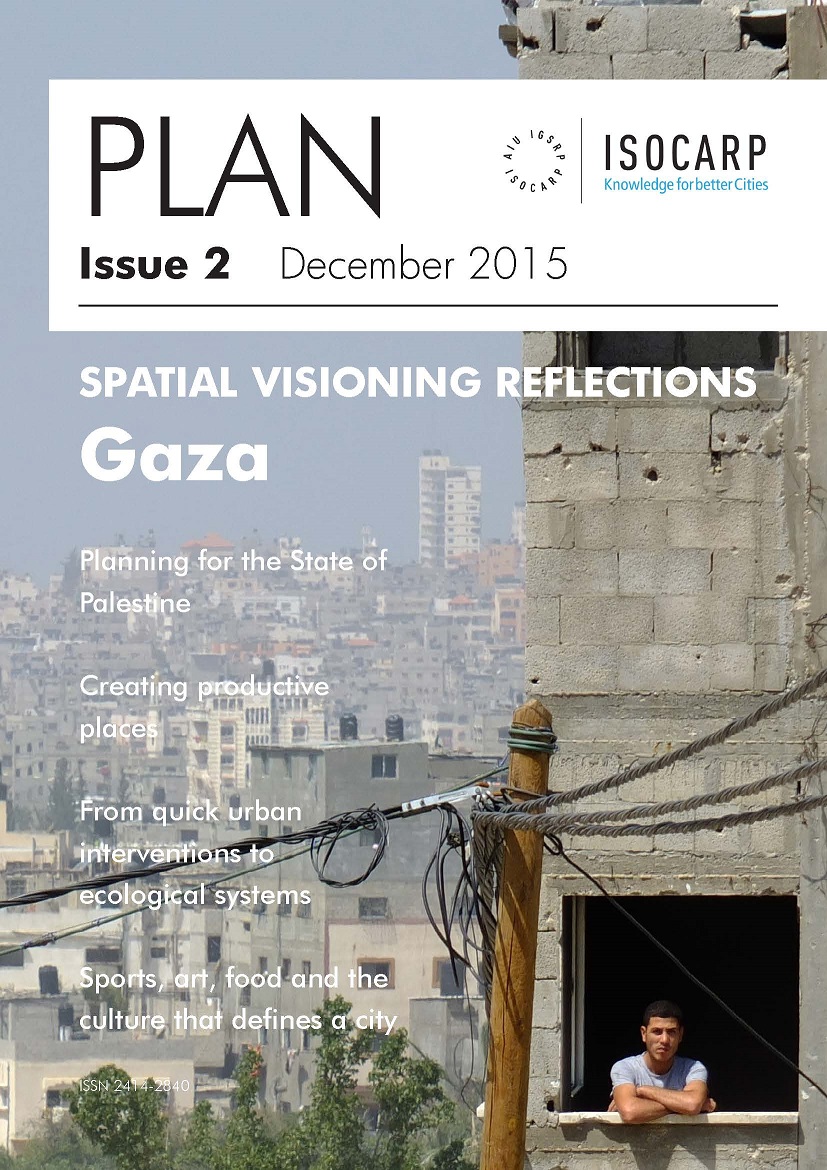2nd Spatial Visioning Reflections –
– Spatial Planning in the Gaza Strip
Joint press release UN-Habitat and ISOCARP
Jerusalem/The Hague, 20 January 2016 – The United Nations Development Programme (UNDP/PAPP) and the International Society of City and Regional Planners (ISOCARP) launched the second edition of the Spatial Visioning Reflections magazine, with special focus on the Gaza Strip.
You can find the publication at its UPAT page.
The magazine provides innovative spatial planning solutions for the current and anticipated future challenges for spatial development in the Gaza Strip. It contains a collection of articles prepared by Palestinian and international planners addressing spatial planning issues across various critical sectors that will guide national planning policies and reconstruction efforts for the Gaza Strip as a result of the three recent wars.
“In order to see behind the currently extremely difficult circumstances in Gaza, I hope that with this magazine all actors and stakeholders are better able to understand the dreams, desires, values and opportunities for the Palestinian cities and for Gaza in particular” said Martin Dubbeling, ISOCARP Vice President Urban Planning Advisory Teams. “Charting a course for the future of Palestinian cities starts with talking with their inhabitants, asking for their dreams, and listening to their meaningful stories. This magazine is made to stimulate planning competitive and liveable cities in Palestine” Dubbeling added.
The 2014 hostilities on the Gaza Strip has had a devastating impact on its people, with 18,000 homes either destroyed or substantially damaged, and 100,000 people cut of from water supplies. Of the 1.8 million Palestinians living in the 365 square kilometre area of Gaza, 1.1 million are registered refugees with UNRWA. Further, the growing population is estimated to rise to approximately 2.13 million by the year 2020, which will only serve to exacerbate the current poor living conditions.
The population density of urban settlements in the Gaza Strip is greatest within the refugee camps, further compounding risks to people during times of war and disaster. To this end, UNDP and ISOCARP joined efforts, through a team of Palestinian and international planning experts to imagine, discuss and illustrate spatial visions for the Gaza Strip.
“Spatial planning is an important lever for promoting sustainable development and improving the quality of life,” said UNDP Special Representative of the Administrator, Roberto Valent. “UNDP, in cooperation with the Palestinian Government, UN Habitat, ISOCARP and other local and international partners, is providing a platform for integrated planning that will guide recovery and reconstruction and allow for economic growth and increased resilience in Gaza,” Valent concludes.
The year 2016 will mark a decade since the beginning of the blockade on the Gaza Strip, during which local residents have experienced three wars. This magazine is a modest contribution to the commitment by the United Nations and ISOCARP to achieve the 2030 Agenda for Sustainable Development, under Sustainable Development Goal 11 – Sustainable Cities and Communities – that reads: “By 2030, enhance inclusive and sustainable urbanization and capacity for participatory, integrated and sustainable human settlement planning and management in all countries”.